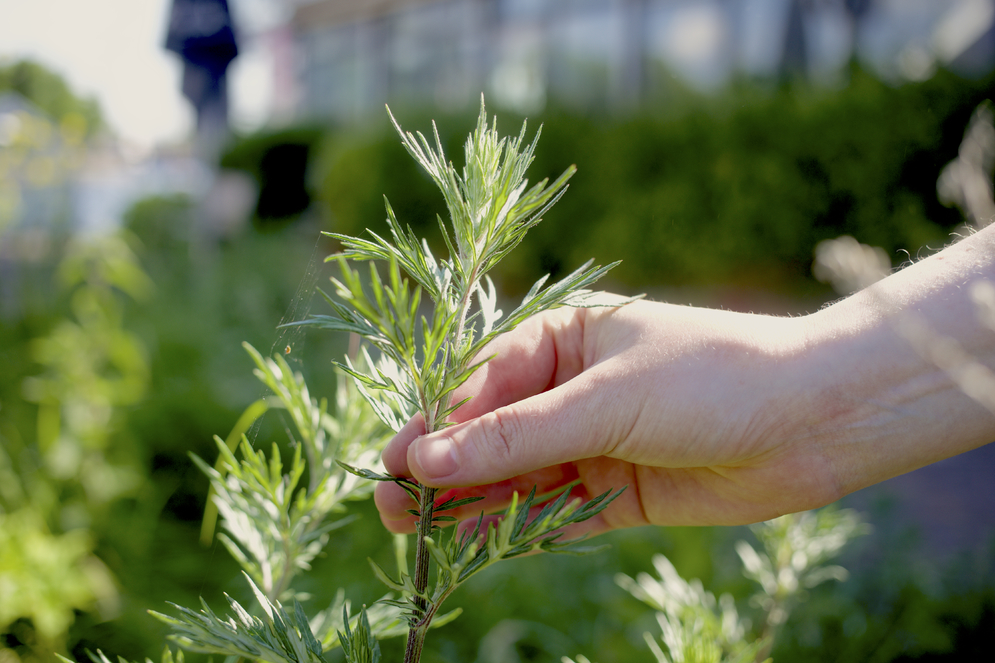Picking mugwort
Mugwort, with the botanical name of Artemisia vulgaris, is said to have derived its common name from its traditional use, along other herbs (such as Ground Ivy), in the flavouring of drinks, especially beer - before the introduction of hops. There have been many superstitions surrounding this plant: it was believed to protect from wild beasts and evil spirits in general; in the Netherlands and Germany one of its names is St. John's Plant, due to the belief that if harvested on St. John's Eve, it gave protection against disease and misfortune.
Hildegard Von Bingen wrote about the medicinal properties of mugwort, highlighting its ability to heal ailing intestines and warm a cold stomach. It is believed to have stimulant and tonic properties, and its chief employment is as an emmenagogue, which is a substance that stimulates or increases menstrual flow. Today, mugwort taken orally is promoted for digestive problems, irregular menstruation, and high blood pressure. It is also promoted as a sedative, laxative, and liver tonic.
Mugwort is dark green on the top leaf sides and silver grey beneath and it's closely related to Wormwood (Artemisia absinthium). Mugwort is a very common scrubland herb and Wormwood is currently quite rare, here in the Netherlands at least. Mugwort is usually abundant on hedge banks and waysides.
Sources: A Modern Herbal, by Mrs. M. Grieve, 1931
Hildegard Von Bingen's Physica: The Complete English Translation of Her Classic Work on Health and Healing, Translated from Latin by Priscilla Throop, 1998
Mugwort - National Center for Complementary and Integrative Medicine
